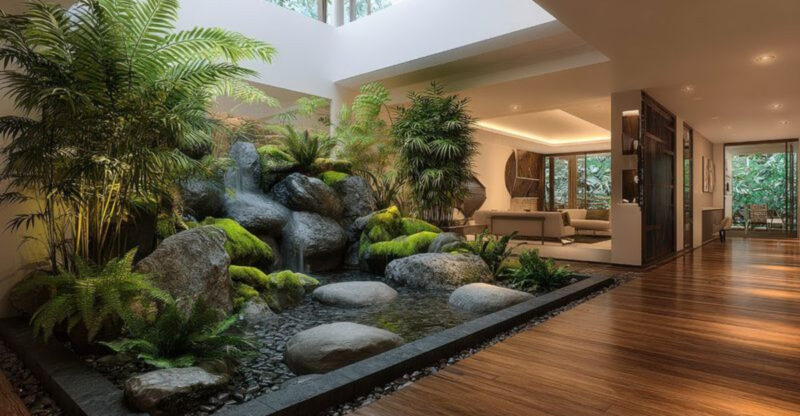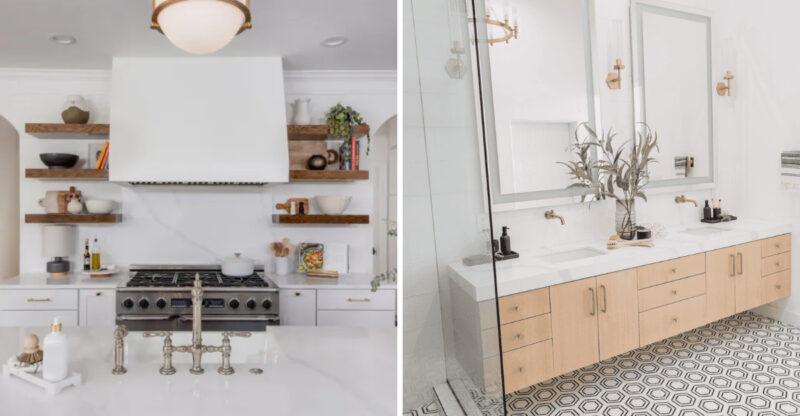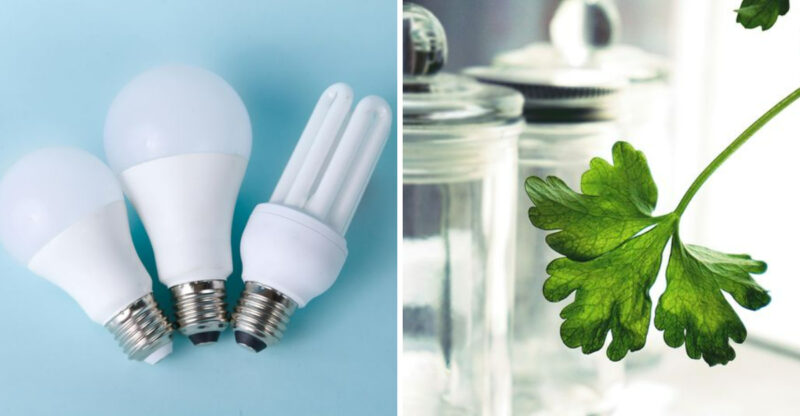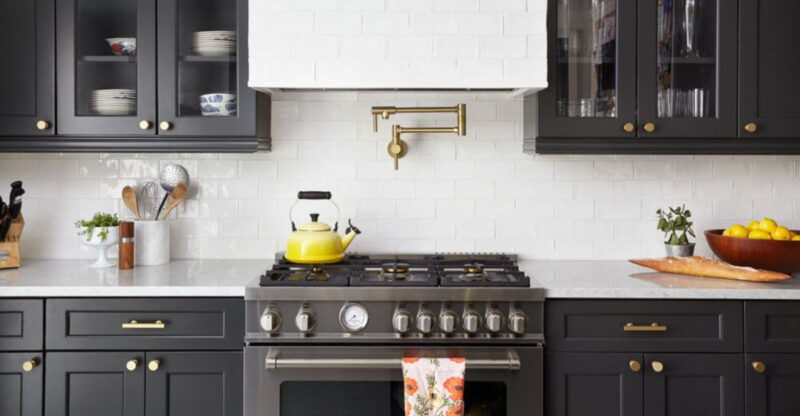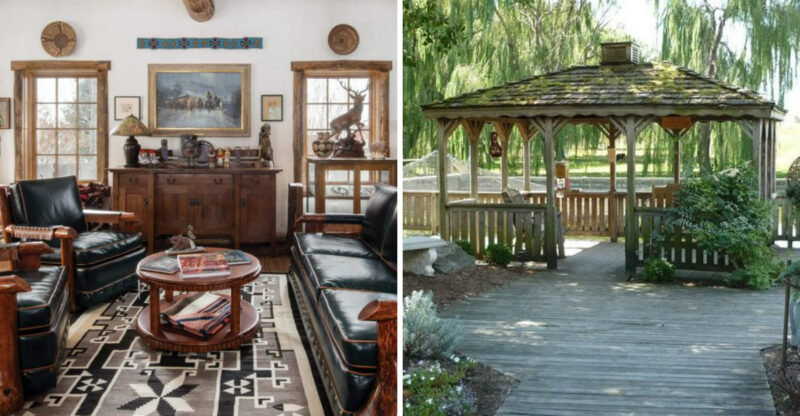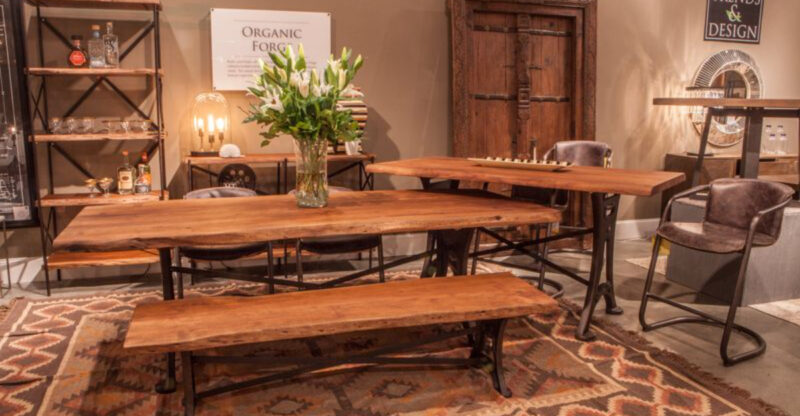12 Polarizing Home Trends Designers Secretly Love
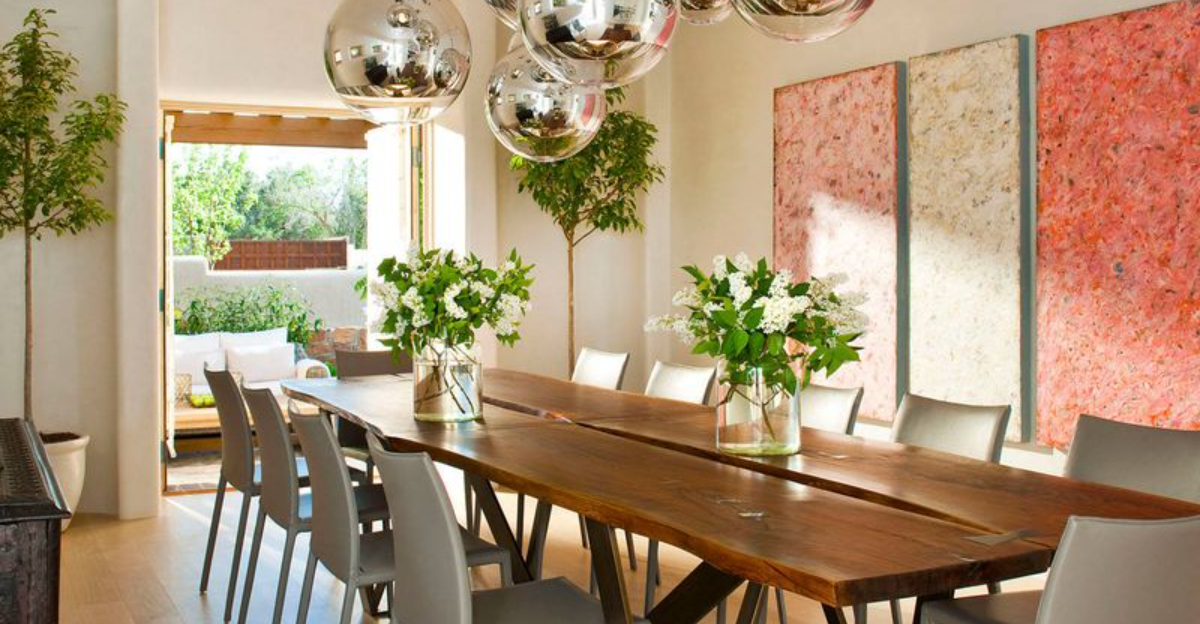
Ever noticed how some home design choices spark heated debates among decor enthusiasts? These polarizing trends often divide people into love-it-or-hate-it camps.
What’s fascinating is that many professional designers privately adore these controversial styles, even while publicly maintaining more conservative stances.
Here’s a peek behind the curtain at twelve divisive home trends that design professionals secretly can’t get enough of.
1. Bold Wallpaper
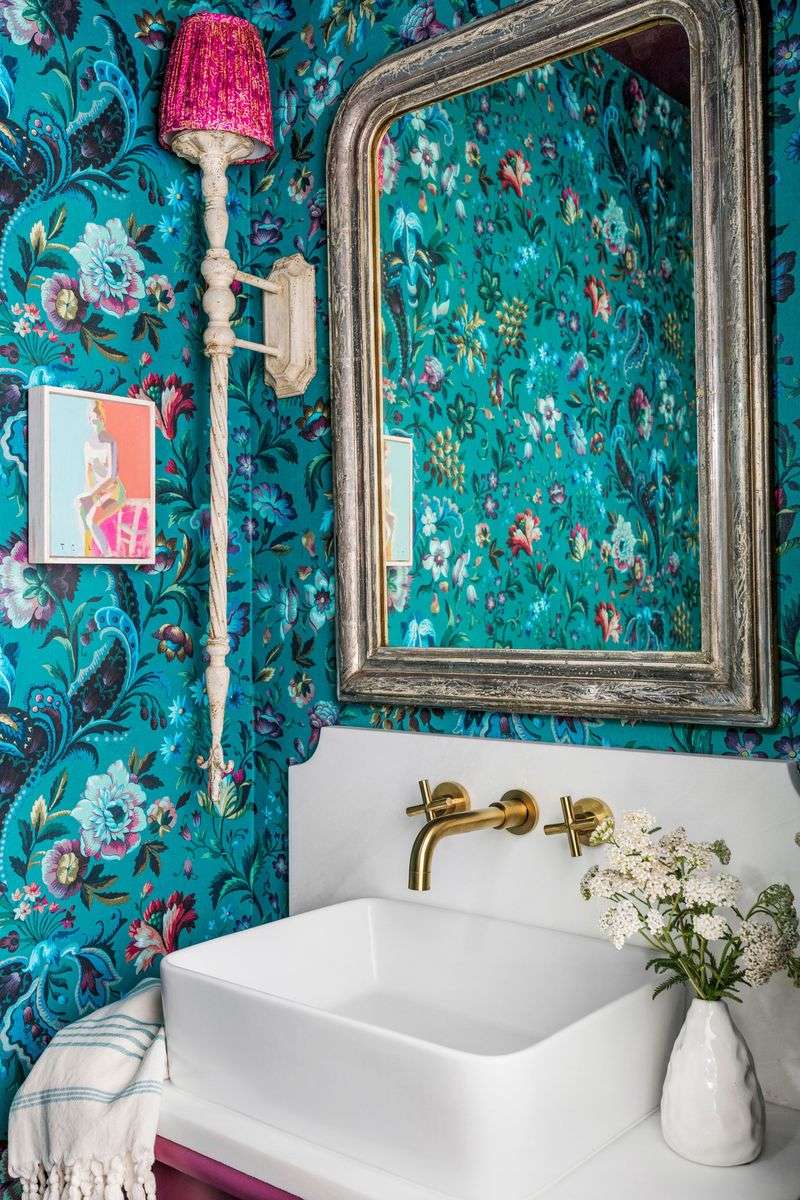
Wild patterns that make a statement have quietly reclaimed designers’ hearts. The dramatic transformation a vibrant wallpaper creates turns ordinary rooms into personality-filled spaces without major construction.
Many professionals secretly collect samples of the most outrageous prints, waiting for clients brave enough to embrace them. The current generation of wallpapers also offers practical advantages with peel-and-stick options making bold choices less permanent.
Designers particularly love using dramatic wallpaper in unexpected places like ceilings, inside closets, or as statement walls in powder rooms. These small-scale applications allow for maximum impact without overwhelming a home’s overall aesthetic.
2. Mixed Metal Finishes
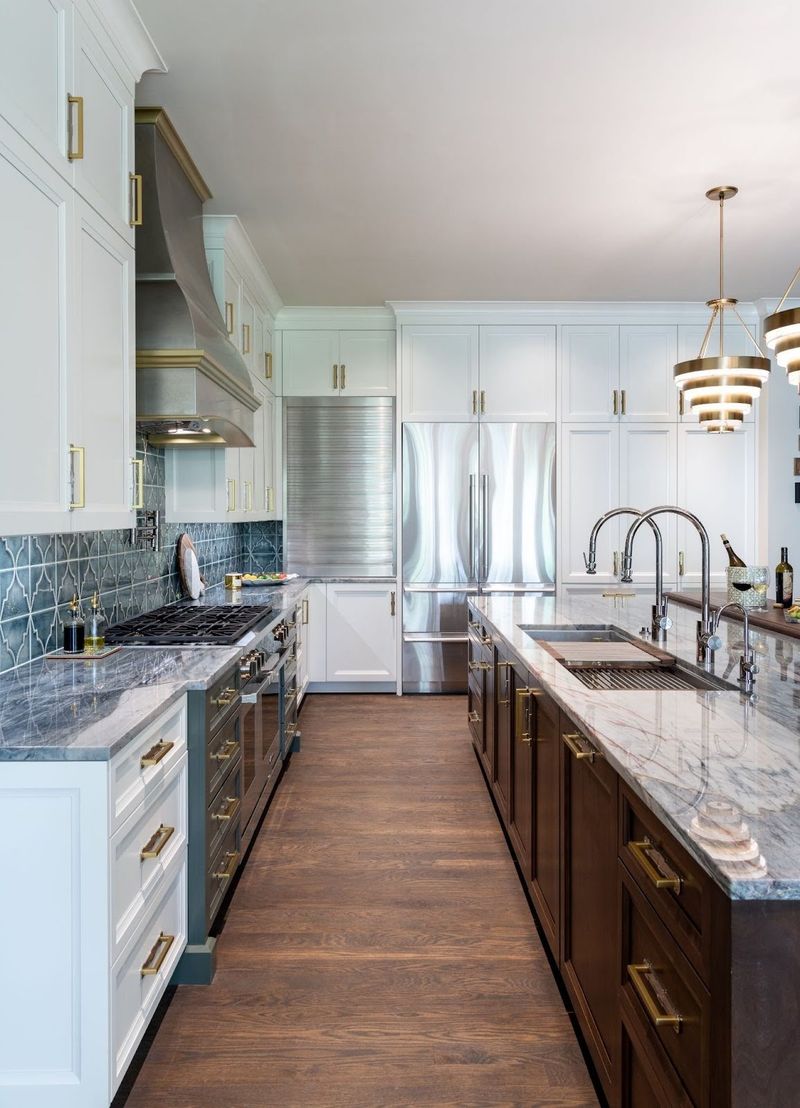
Breaking the matchy-matchy rule thrills designers who understand how layered metals create depth. Combining brass lighting with matte black hardware and stainless appliances feels intentionally curated rather than cookie-cutter perfect.
The secret lies in creating a hierarchy choosing a dominant metal for major elements, then introducing secondary metals as accents. This approach mirrors how jewelry styling has evolved, with people confidently wearing mixed metals rather than strictly matching pieces.
Designers particularly love this trend because it extends the lifespan of spaces, allowing for gradual updates without requiring wholesale replacement of all hardware and fixtures when trends shift. It’s rebellion against perfection that creates authentic, lived-in spaces.
3. High-Gloss Cabinets
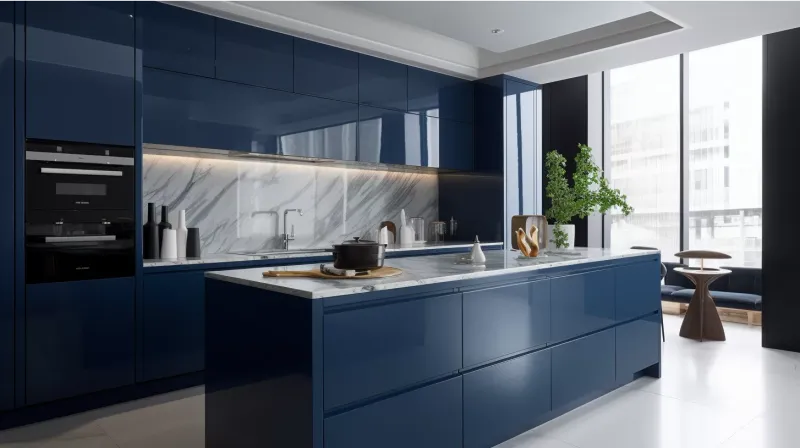
Shiny kitchen surfaces secretly delight designers despite their polarizing reputation. The reflective quality of high-gloss finishes bounces light around spaces, making kitchens feel larger and more dynamic than their matte counterparts.
When paired with minimal hardware and clean lines, these gleaming surfaces create a sophisticated, almost jewelry-like presence in the home. Maintenance concerns often make clients hesitate, but designers know that modern high-gloss finishes have become remarkably more fingerprint-resistant and durable.
Dark colors like navy, emerald, or even black in high-gloss finish create particularly dramatic statements that designers love recommending for confident clients. The depth created by light reflecting off these surfaces adds a dimension that flat finishes simply cannot achieve.
4. Maximalist Decor
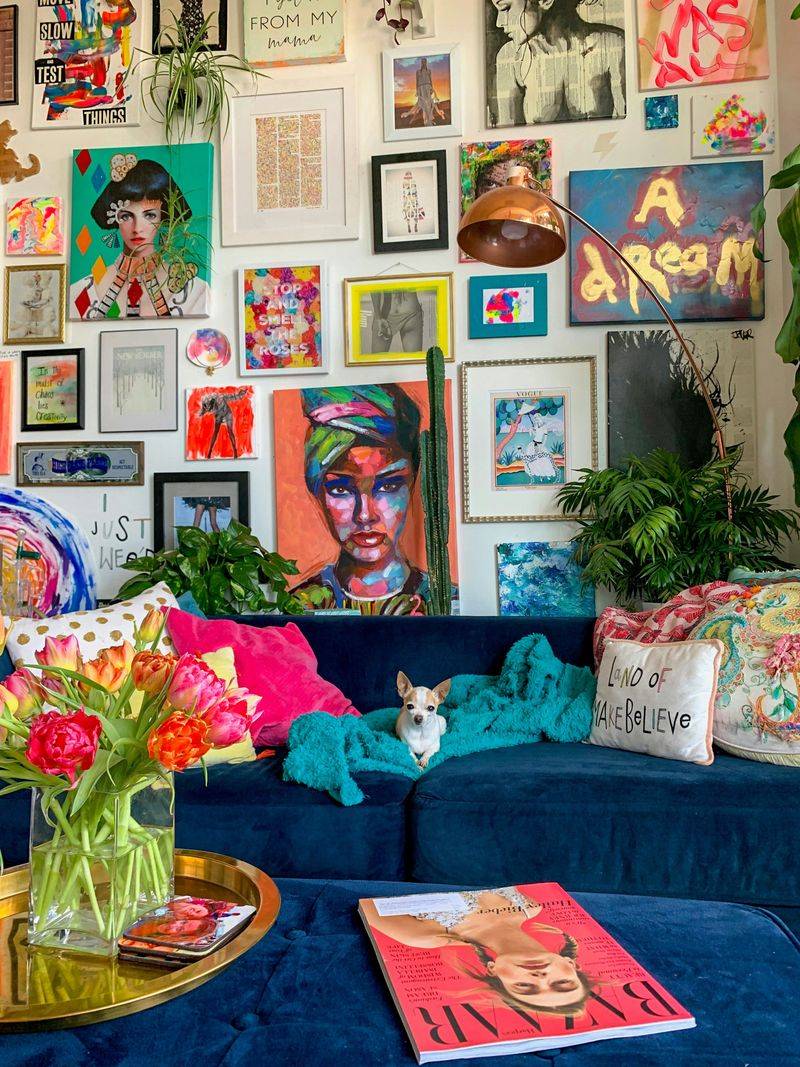
Pattern mixing and abundance thrill designers who’ve grown weary of minimalism’s constraints. After years of promoting clean, sparse spaces, many professionals secretly celebrate the return of layered, collected interiors that tell personal stories.
Maximalism allows for showcasing treasured collections, family heirlooms, and travel souvenirs that might otherwise remain boxed away. The skill lies in creating controlled chaos spaces that feel abundant yet intentional rather than cluttered.
Designers particularly enjoy how maximalist spaces evolve over time rather than being instantly “finished.” This approach creates homes that feel authentic and lived-in from day one, avoiding the sterile perfection that can make professionally designed spaces feel unapproachable. It’s decorating with personality rather than following rigid rules.
5. Statement Ceilings
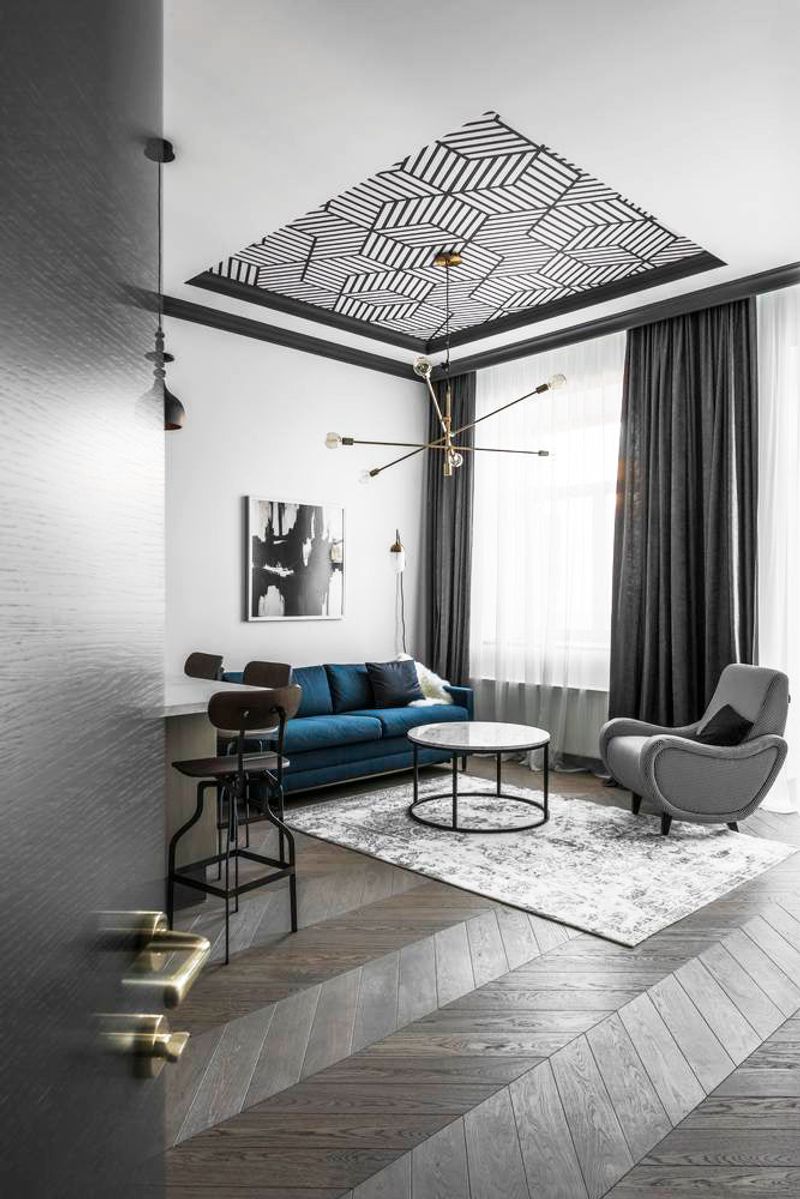
The “fifth wall” offers thrilling design potential that makes professionals giddy with creative possibilities. While clients often focus exclusively on walls and floors, designers secretly love suggesting unexpected ceiling treatments that transform spaces from ordinary to extraordinary.
Wallpapered ceilings, dramatic paint colors, or architectural details like coffering or beams create memorable rooms that feel complete in a way that conventionally designed spaces don’t. The overhead plane creates a powerful impression precisely because it’s so often overlooked.
Hotels and restaurants have long used this technique to create immersive environments, and designers relish bringing this commercial design strategy into residential spaces. The ceiling becomes a canvas for expression without interfering with furniture placement or daily function making it both practical and impactful.
6. Dark Painted Walls
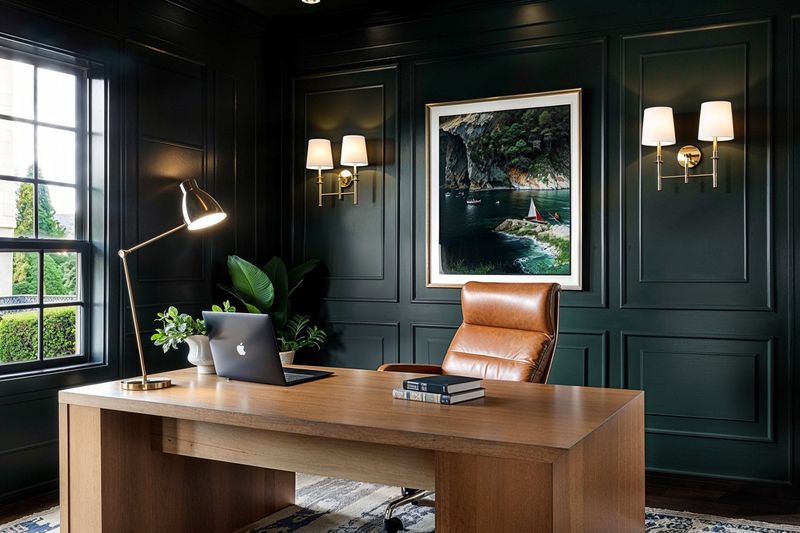
Inky hues create intimacy that secretly excites designers tired of endless white boxes. Deep charcoals, navy blues, and forest greens transform ordinary rooms into cozy retreats with instant architectural interest, even in builder-basic spaces.
Contrary to popular belief, designers know dark walls often make spaces feel larger, not smaller, by blurring boundaries and creating depth. The dramatic backdrop also makes artwork and furniture pop in ways that neutral walls never could, creating gallery-like focus for special pieces.
Many designers particularly love suggesting dark colors for rooms that benefit from coziness home offices, dining rooms, and bedrooms where the enveloping quality creates focus or relaxation. The transformative power of dark paint represents one of the highest-impact, lowest-cost design moves available.
7. Vintage Tile Patterns
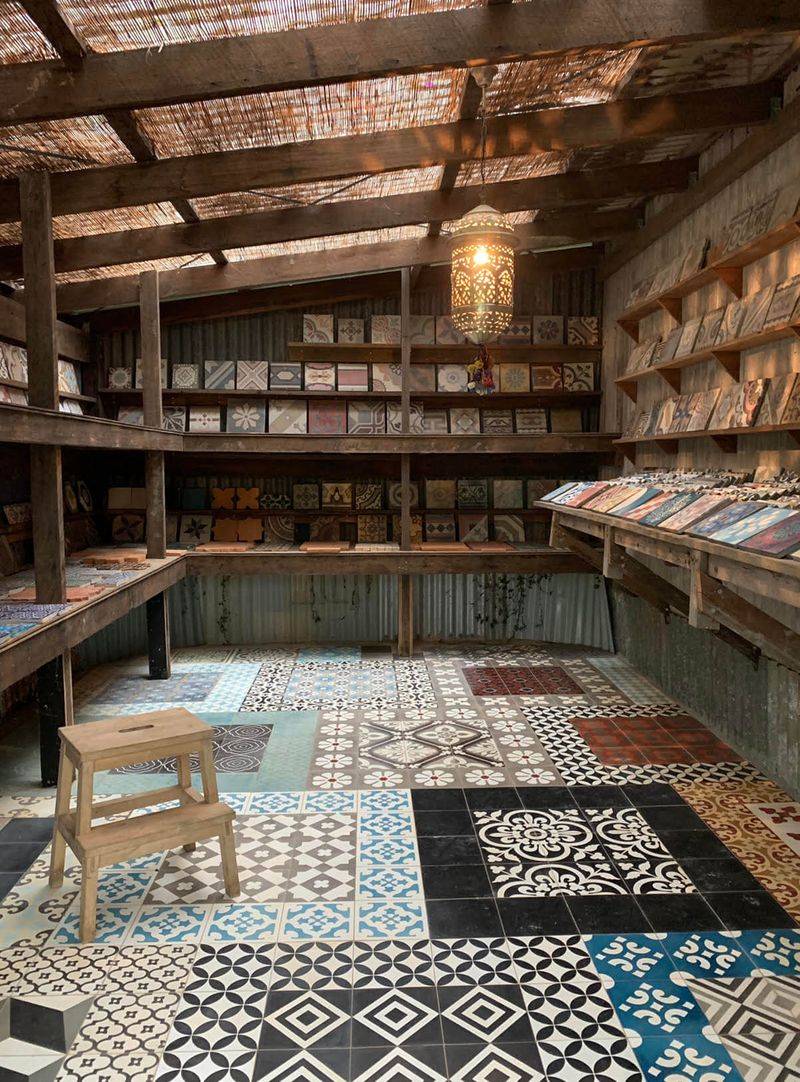
Ornate bathroom and kitchen tile designs from bygone eras secretly thrill designers exhausted by subway tile’s dominance. The character and craftsmanship of zellige, encaustic, and patterned ceramic tiles inject personality that mass-produced options simply cannot match.
These statement-making surfaces create instant focal points that allow the rest of a space to remain simple. Designers particularly appreciate how these tiles connect to architectural traditions, making new spaces feel grounded and authentic rather than trendy.
While clients often worry about resale value with distinctive tile choices, designers know that quality, character-filled materials often become selling points rather than deterrents. The imperfections and variations in handmade tiles create depth and visual interest that machine-perfect tiles lack, bringing warmth to potentially cold, hard surfaces.
8. Curved Furniture
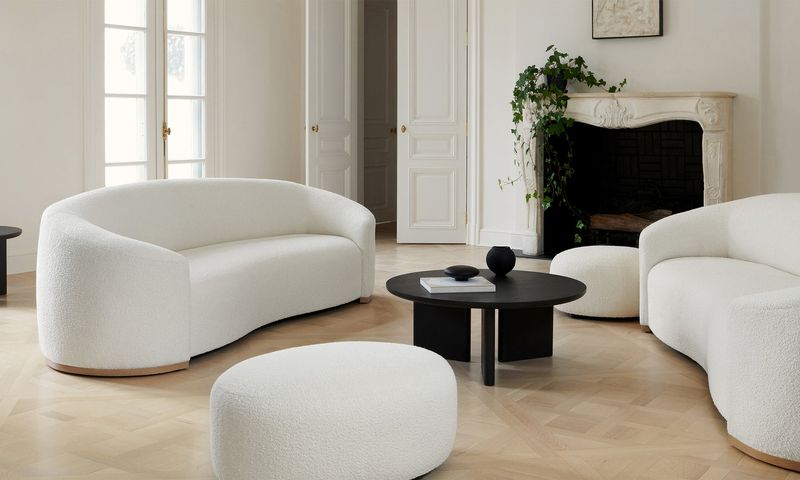
Sensuous shapes break the tyranny of straight lines, bringing unexpected softness to interiors that makes designers’ hearts flutter. After decades dominated by boxy, angular furniture, the return of curves represents a welcome shift toward more organic, human-centered design.
Curved sofas, rounded tables, and arched details create natural conversation areas and flow that rigid rectangular layouts cannot achieve. Designers particularly love how these pieces can solve awkward layout challenges, fitting into corners or creating transitions between spaces.
The psychological impact of curved elements adds another dimension designers appreciate research shows people respond more positively to rounded forms than to sharp angles. This subtle effect creates spaces that feel inherently more welcoming and comfortable, even if clients can’t quite identify why they feel so at ease in these thoughtfully designed rooms.
9. Open Bathroom Shelving
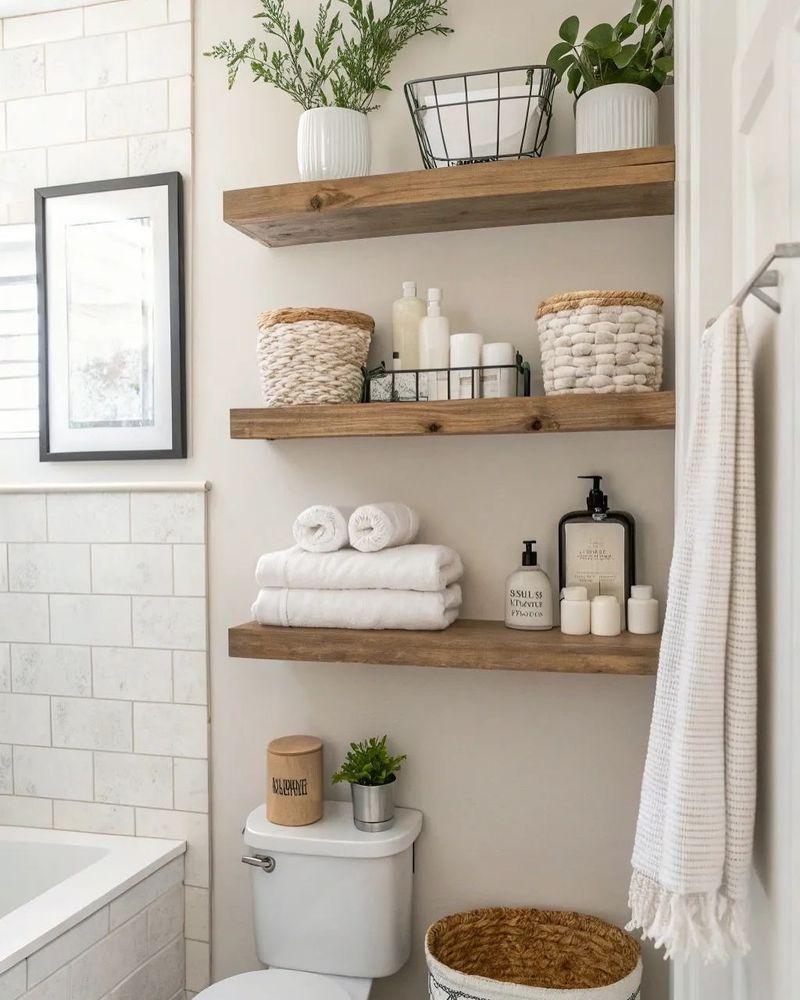
Exposed storage makes design professionals swoon despite practical objections from clients. The visual breathing room created by replacing some upper cabinets with open shelving transforms utilitarian bathrooms into spa-like retreats with display opportunities.
Designers secretly love how these shelves force clients to curate their belongings, keeping only the most attractive essentials visible. The resulting spaces feel more intentional and less cluttered than bathrooms where everything disappears behind cabinet doors.
Strategic styling of these shelves with beautiful containers, folded linens, and decorative objects elevates everyday routines into mindful rituals. The additional layer of personality creates bathrooms that feel distinctly human rather than clinical, breaking away from the anonymous hotel-like spaces that dominated bathroom design for decades.
10. Eclectic Gallery Walls
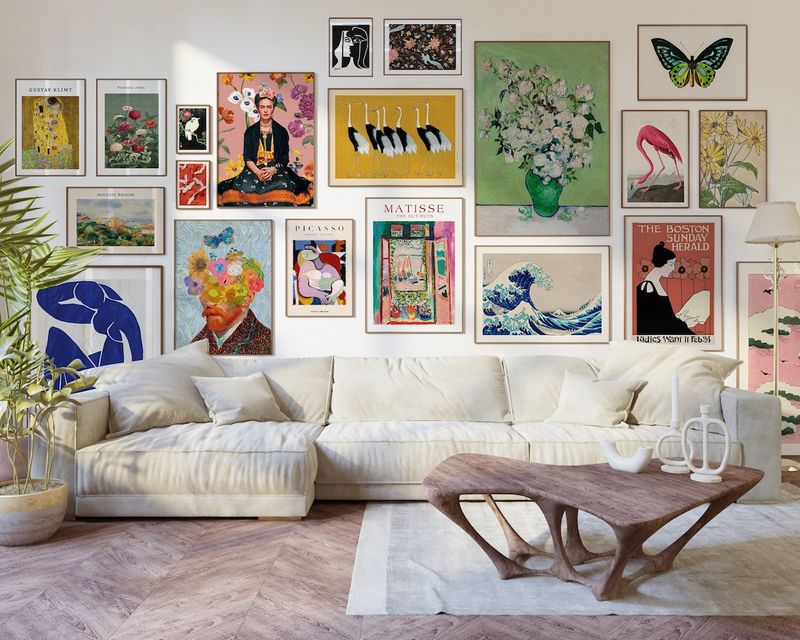
Mismatched art collections make designers secretly giddy, breaking free from rigid grid layouts. The personality revealed through varied pieces from fine art to children’s drawings, vintage photographs to travel souvenirs creates spaces that feel authentically lived-in rather than catalog-perfect.
Designers particularly appreciate how these walls evolve over time, allowing clients to add meaningful pieces rather than feeling locked into fixed arrangements. The layering of different frames, sizes, and mediums creates visual texture that even the most expensive single artwork cannot achieve.
Gallery walls also solve practical design challenges by filling awkward wall spaces or creating focal points in architecturally unremarkable rooms. Many designers keep personal collections of unique frames and affordable art sources, ready to supplement clients’ collections when creating these characterful installations that tell unique visual stories.
11. Velvet Upholstery
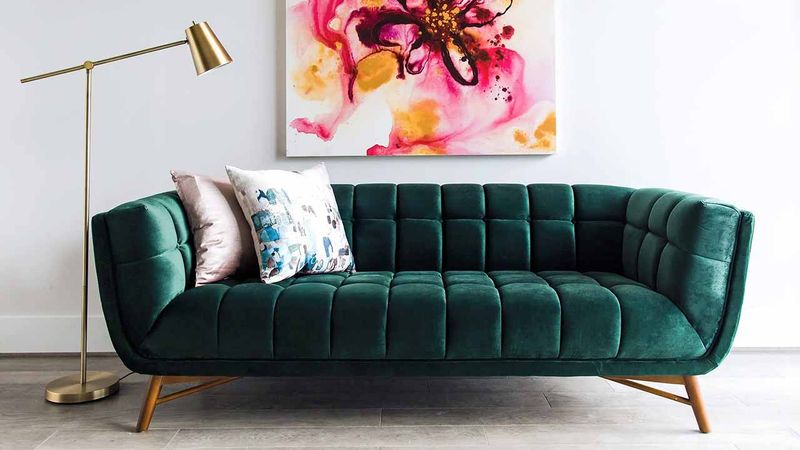
Touchable textures excite designers who understand that tactile elements create emotional connections to spaces. Velvet’s light-catching quality transforms ordinary furniture shapes into sculptural elements that shift appearance throughout the day as light changes.
The material’s rich history adds depth to contemporary spaces, connecting modern homes to design traditions spanning centuries. Designers particularly love today’s performance velvets that offer the luxury look without the maintenance concerns that once made this fabric impractical for everyday use.
Bold jewel tones in velvet create statement pieces that anchor neutral rooms, while more subtle colors add textural interest without overwhelming a space. Many designers secretly keep velvet swatches in their favorite colors, waiting for the perfect client brave enough to embrace this material that manages to feel both timeless and current simultaneously.
12. Oversized Light Fixtures
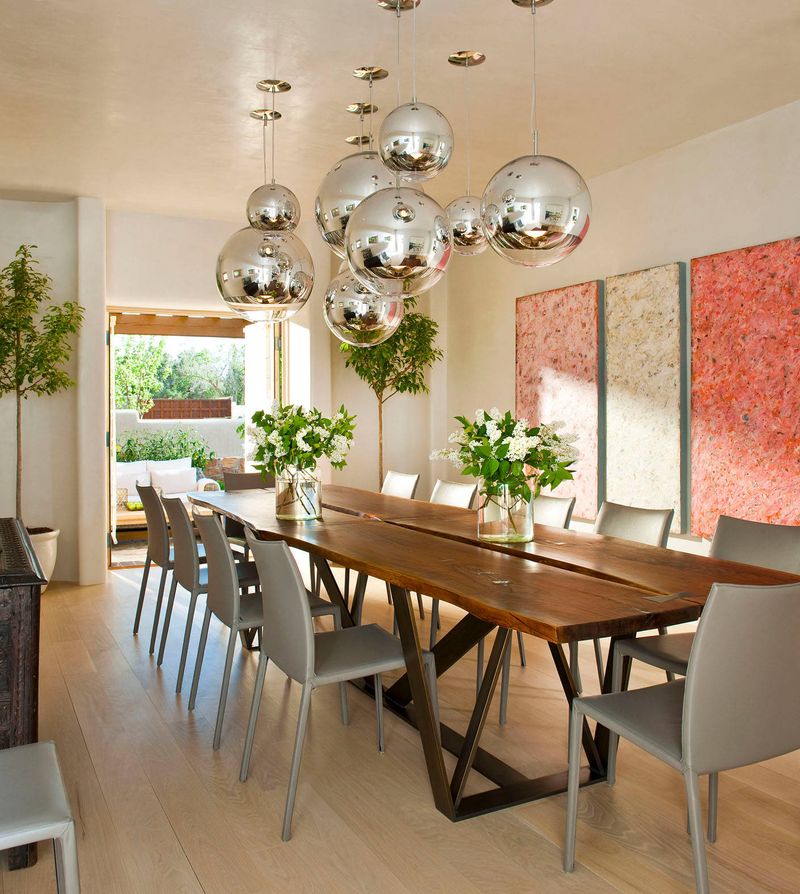
Dramatically scaled pendants and chandeliers make designers’ eyes light up with possibilities. These statement pieces serve as functional sculpture, creating focal points that transform ordinary rooms into memorable spaces through proportion play.
Scale often surprises clients who typically choose fixtures that are too small, while designers understand that slightly oversized lighting creates confidence and intentionality. These bold elements establish hierarchy in open floor plans, defining zones without walls while drawing the eye upward to appreciate ceiling height.
Designers particularly love how these fixtures create atmosphere beyond mere illumination, casting interesting shadows and creating ambient light that flatters both spaces and people. The emotional impact of walking into a room anchored by a perfectly chosen oversized fixture creates the kind of memorable impression that designers strive to deliver.

